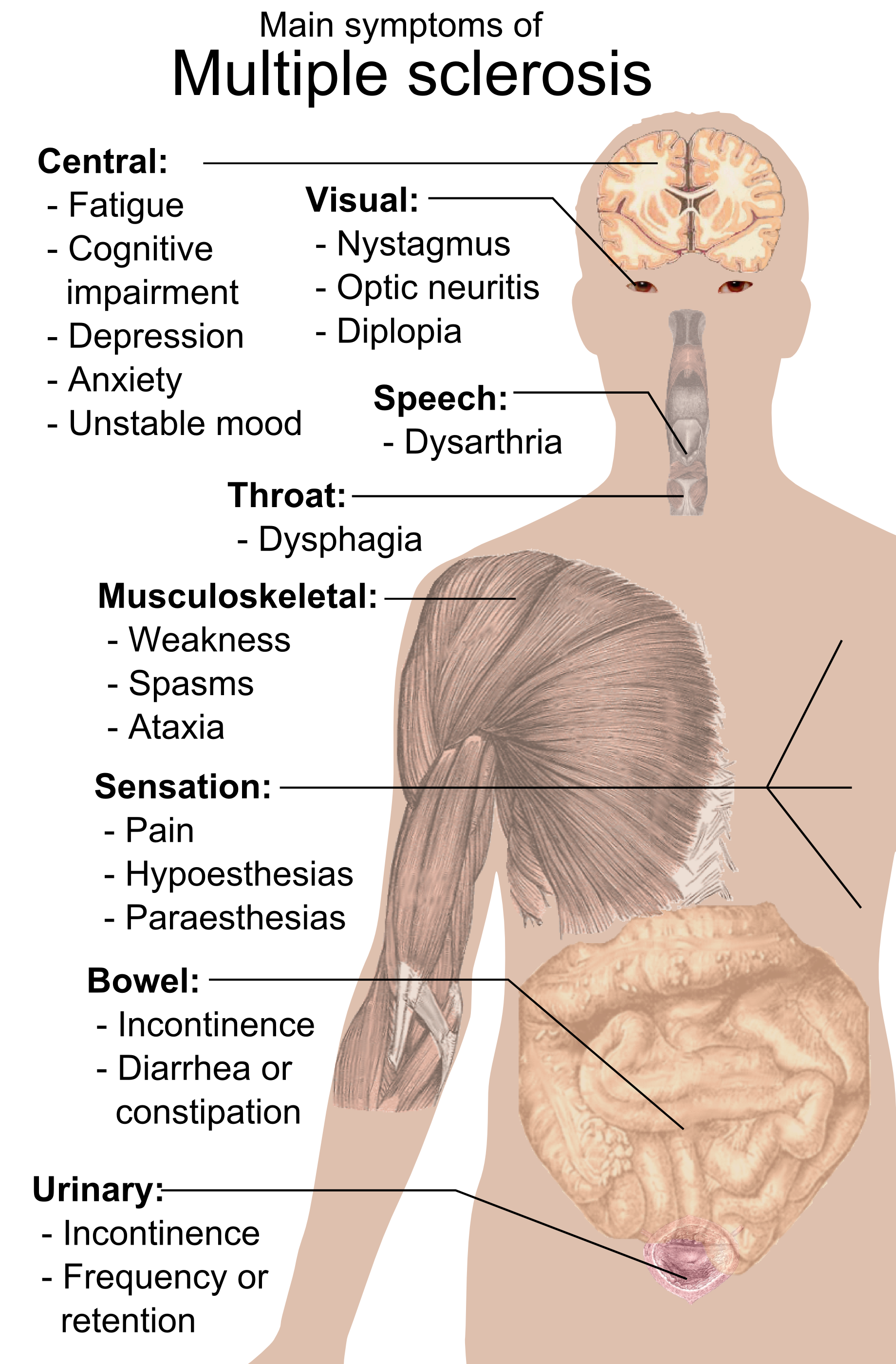Image Source: Häggström, Mikael. "Medical gallery of Mikael Häggström 2014". Wikiversity Journal of Medicine 1 (2). DOI:10.15347/wjm/2014.008. ISSN 20018762.
Most prevalent in people between the ages of 15 and 40, and 3x more likely to occur in women than men, symptoms of MS, as outlined below, tend to develop slowly over time. At Brentwood Medical Clinic, Dr. Ali Ghahary works closely with patients to find applicable and effective treatment for these MS-related symptoms.
Balance, vertigo and dizziness are all common symptoms of MS and may be permanent. Tremors and poor coordination also co-exist with these symptoms.
Bladder and bowel dysfunction; this includes incontinence, constipation and diarrhea due to the interruption of the body’s neural pathways. Treatment varies from urinary suppressants to stool softeners. Bladder and bowl functions should improve within 3 to 4 weeks of receiving appropriate treatment.
Cognitive impairment affects 40 to 70 percent of those diagnosed with MS and is one of the earliest manifestations associated with the disorder.
Gait (difficulty walking) is a symptom associated with MS due to several factors including balance problems, spasticity and muscle weakness, with physical and occupational therapy being the chosen treatment methods for these symptoms.
Pain affects 50% of those with MS and can take several forms such as fibromyalgia, facial pain, spinal pain, muscle pain and migraine headaches. Anti-convulsants are typically prescribed to help nerve-related pain associated with MS.
Sensory impairment, numbness and tingling are the most common sensory symptoms and manifest in one or more limbs as feelings of tightness, weakness, pain, aching or burning sensations due to inflamed or damage nerve pathways.
Uthoff’s Phenomena also known as heat intolerance is associated with an increase in the core body temperature. Triggers include bathing or showering with hot water, exercise, exposure to sunlight, and fevers. Emotion and fatigue can also play a part in affecting the core body temperature.
Optic neuritis, otherwise known as inflammation of the optic nerve, will present as blurred vision or loss of vision, usually in one eye. You may also notice pain with eye movement as well as see flashes of light and notice eye sensitivity.
Depression and anxiety is more prevalent in people diagnosed with MS and is typically a reaction due to the initial diagnosis and a result of associated and oftentimes debilitating symptoms of the disease. A regimen of anti-depressants, anti-anxiety medications and counseling are beneficial to patients diagnosed with MS.
Other treatments for MS include Disease Modifying Therapies (DMTs), a class of drugs that will target the inflammatory symptoms associated with MS in effort to reduce the severity and frequency, in addition to Symptom Management Therapies such as painkillers, and Relapse Management Therapies (RMTs), which include the use of steroids. It is important to note that Relapse Management Therapies should only be used short-term due to their ability to cause irritability, difficulty sleeping, worsening kidney and liver function, and other severe side effects.
